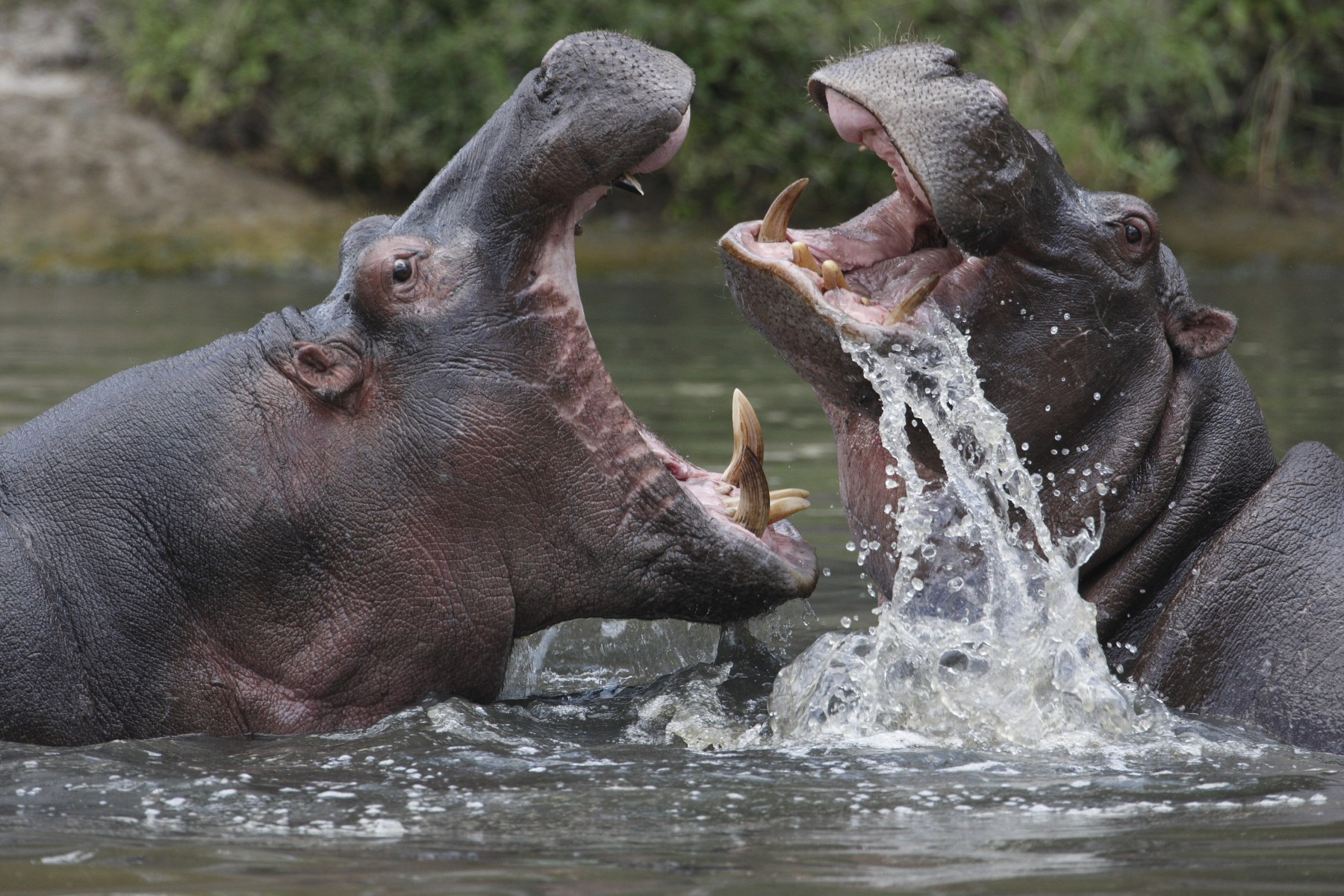The hippopotamus are the colossal creatures that roam the African savannas and waterways. They stand out as a symbol of strength and resilience in the face of nature's challenges.
-
Majestic Giants of the African Savanna Hippos rank as the third largest land mammals on Earth, trailing only behind elephants and white rhinos in size. Native to Africa, these colossal creatures are revered for their imposing stature and formidable presence in their natural habitats.
-
The Two Species of Hippopotamids Within the hippo family, there exist two distinct species: the common hippopotamus (Hippopotamus amphibius) and the pygmy hippo (Choeropsis liberiensis). While the common hippo dominates the African landscape, the pygmy hippo is a smaller, lesser-known variant found in select regions.
-
Masterful Swimmers and Aquatic Nomads Despite their hefty build, hippos are adept swimmers, capable of holding their breath for up to five minutes underwater. Fondly dubbed the "river horse," these semi-aquatic mammals traverse water bodies with ease, utilizing their webbed feet and streamlined bodies for efficient locomotion.
-
Challenges and Conservation Efforts Threatened by habitat loss and human encroachment, hippos face numerous challenges in the wild. Classified as "threatened" by the IUCN Red List, these iconic animals require concerted conservation efforts to safeguard their dwindling populations and preserve their natural habitats.
-
Herbivores of the Savannah Despite their imposing demeanor, hippos are gentle herbivores, subsisting on a diet primarily composed of grasses. Consuming an astonishing 80 pounds of vegetation nightly, these grazers play a vital role in shaping the ecosystem dynamics of their surroundings.
-
Life Cycle and Reproduction The gestation period of a hippo spans approximately 243 days, culminating in the birth of a calf weighing between 30 to 50 pounds. Female hippos exhibit remarkable maternal instincts, nurturing their offspring with care and protection.
-
Nocturnal Nomads and Vocal Communicators While predominantly nocturnal, hippos vocalize loudly to communicate with one another, employing a diverse array of sounds ranging from honks to squeaks. These vocalizations serve as integral means of social interaction and territorial assertion within hippo communities.
-
Remarkable Adaptations Hippos possess remarkable adaptations to thrive in their African habitats, including the ability to produce a natural sunblock to shield their sensitive skin from the harsh African sun. Additionally, their unique method of dung sniffing enables them to discern friend from foes within their social circles.
-
Conservation Imperatives and Habitat Preservation As key ecosystem engineers, hippos play a crucial role in shaping their environments and fostering biodiversity. However, escalating threats such as habitat fragmentation and poaching necessitate urgent conservation measures to safeguard the future of these magnificent creatures.
Hippos stand as iconic symbols of Africa's rich biodiversity, embodying resilience, strength, and adaptability in the face of environmental challenges. Through concerted conservation efforts and public awareness, we can ensure the continued survival of these majestic behemoths and preserve the ecological balance of their habitats for generations to come.
